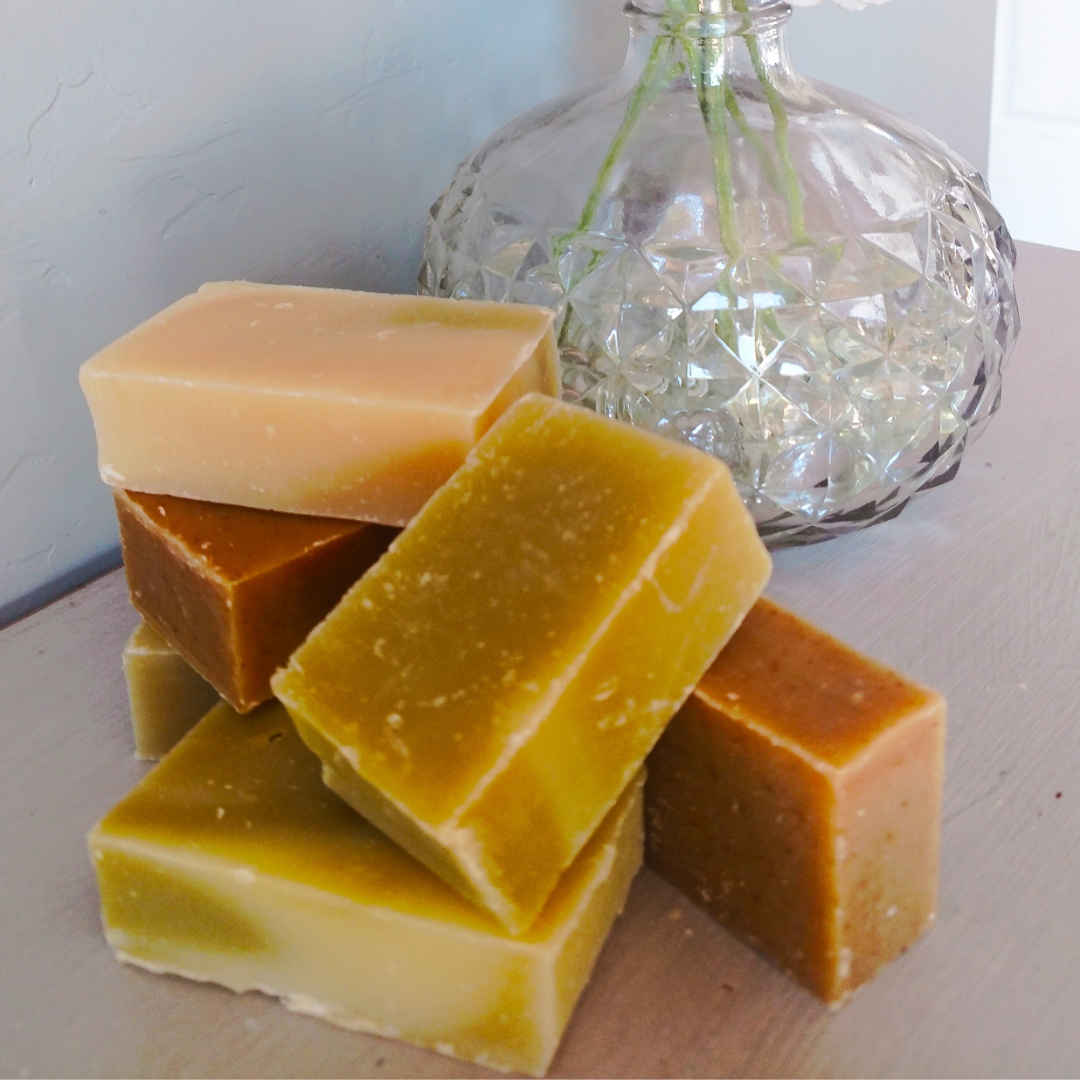What is Cold-Processed Soap
Posted by Kelsey Johnson on 7th May 2021
All soap is the result of a chemical reaction called saponification that occurs between lye and a fat or oil such as olive oil or coconut oil. Cold-processed soap allows the lye to be neutralized without any outside sources of heat, called “curing”. This is a time consuming process that allows for more gradual saponification. It can take 4-6 weeks to make this kind of soap. The lack of heat keeps the essential oils intact and in perfect condition.

Cold-processed soap is made by mixing sodium hydroxide or lye, with water, blending it with fatty oils, and adding essential oils and natural colorants like clays. Then it is poured into molds and takes 24 hours to become soap. Once removed from the mold, it dries for an additional 24 hours before being cut into individual bars of soap. Over the next 4-6 weeks, the soap “cures” as all of the lye is used up to break down the oils into their cleansing chains, and water is slowly evaporated, leaving a gentle, firm bar of soap.

When you cold-process soap, the fatty acids of the oils are broken down by the lye. They then form a chain which, on one end loves water, and on another end, loves oil. You can see these chains in action while you’re lathering up. The oil-loving end grabs on to the dirt and grime, and the water-loving end hangs on to the water that rinses it all away.

In contrast, hot-process soap is all about immediate results. Instead of placing the soap in a mold to cure, the liquid is placed in a heat source and heated until cured. Cold-process soap has the advantage of a gradual, more natural chemical reaction, resulting in a more nourishing, skin-compatible soap.
These methods of hand-making soap is of course, the opposite of store bought soap which is made on a large scale in factories. Store bought soap is made using a continuous flow method with hundred of hands or more likely robots on the process. The soap base is continually being made in the same "batch" of soap, never to rest or relax. It is then blended with filler ingredients and chemicals such as Sodium Isethionate (a foam enhancer) and Dipropylene Glycol (a chemical solvent...why it's needed...who knows) and then formed into molds.
Commercial soaps strip the natural moisturizing oils from your skin. That is why after you take a bath or shower with commercial soap you reach for that bottle of lotion, to put back the moisture that was taken away.
The ingredients on a bar of commercial soap has a long list of unpronounceable chemicals. Whether or not these synthetic chemical additives are bad for you and the environment may be up for debate, but chances are you are better off without them. Why do commercial soap companies add these undesirable chemicals to their soap? It's because they are cheap and they provide soaps with a very long shelf-life.
It is important to keep in mind that the body’s largest organ is our skin and it is incredibly porous and absorbent. How we treat our skin can have a major impact on our overall health as well as the look and feel of our skin. That is why we need to be aware of what ingredients are in the products we use. We guarantee that our products are safe and nourishing, natural ingredients. We believe you deserve the best, and we are happy to provide that for you!

Follow us on Instagram, Facebook, and Pinterest. Thanks so much for reading.
